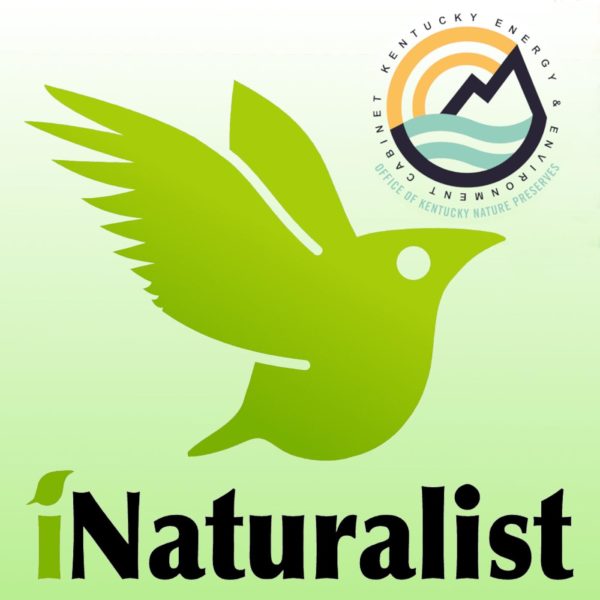
Listen to this Episode:
- From this webpage:
- Find the media player located under the episode picture.
- Click on the green triangle to listen to the audio for this episode.
- From your favorite podcast listening platform:
- Search for “Backyard Ecology.”
Show notes:
Hi Everyone! On today’s episode of Backyard Ecology, we talk with Maddy Heredia who is the outreach specialist and a biologist with the Kentucky Nature Preserves. Maddy and I first met when she was in college and volunteered on a citizen science / community science program that I was leading. Today we turned things around as she taught me a little bit about iNaturalist, which is a program that I knew about in the broad sense, but have never really used myself. I had a lot of fun recording this episode and I hope you enjoy it too.
iNaturalist is a tool that can either be used through a smartphone app or online with your computer. iNaturalist is commonly used to help people identify a plant or animal. After you upload a picture and a little additional information about when and where you found it, iNaturalist will make recommendations as to what the organism could be. Other iNaturalist users can also comment on your photograph and help with the identification.
Another common way that iNaturalist is used is by people who want to document the plants and animals they find. You can document the plants and animals in your yard, the pollinator garden at the local elementary school, the county park or other public land, or anywhere else. The observations that you make and upload to iNaturalist are publicly accessible.
Those observations are extremely valuable to scientists because they can’t be everywhere at all times. Also, we often don’t know exactly where specific plants or animals are found, especially when it comes to understudied organisms like insects. Observations uploaded to iNaturalist can help fill in those knowledge gaps. For example, recently a species of moth that had previously never been documented in Kentucky before was documented in the state because someone took a picture of it and uploaded it to iNaturalist.
I like the fact that not only can I use iNaturalist to help me learn more about the plants and animals that I find, but it can also help scientists learn more about those plants and animals as well. After talking to Maddy and hearing her walk us through the steps of using iNaturalist, I think I’m going to set up an account to help document some of the plants and animals that I find, as well as, to help identify some of the mystery insects that I discover as I’m taking pictures of different pollinators.
If you aren’t already using iNaturalist, then I encourage you to take a look at it. I’m guessing, that like me, you can find multiple uses for it. And if you use iNaturalist in Kentucky, please join the Kentucky Nature Preserve’s projects so your observations can help them learn more about all of our amazing plants and animals.
Links:
- iNaturalist
- Kentucky Nature Preserve Projects on iNaturalist:
- Office of Kentucky Nature Preserves website
- Maddy’s email: madeline.heredia@ky.gov
- Backyard Ecology’s website
- My email: shannon@backyardecology.net
Please tell your friends about Backyard Ecology.
(Social media sharing buttons can be found below the footer.)

Backyard Ecology: Exploring Nature in Your Backyard
Nature isn’t just “out there.” It’s all around us, including right outside our doors. Hi, my name is Shannon Trimboli, and I am the host of Backyard Ecology. I live in southcentral Kentucky and am a wildlife biologist, educator, author, beekeeper, and owner of a nursery specializing in plants for pollinators and wildlife conservation. I invite you to join me as we ignite our curiosity and natural wonder, explore our yards and communities, and improve our local pollinator and wildlife habitat. Learn more or subscribe to my email list at www.backyardecology.net.

Leave a Reply